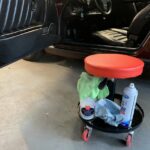With hundreds of car models available today, navigating the diverse landscape of car body styles can be overwhelming. From the familiar hatchback to the sleek coupe-SUV, understanding the different Types Of Car Body Styles is crucial for making an informed decision when choosing your next vehicle. This guide aims to clarify the distinctions between various car body styles, helping you identify the perfect fit for your needs and preferences.
Established categories like hatchbacks and estates are now accompanied by newer styles such as coupe-SUVs and shooting brakes, alongside traditional MPVs and convertibles. Each car body type is designed with specific priorities in mind. Estates are known for their generous and practical boot space, while coupes often emphasize stylish aesthetics over ultimate practicality. Four-door coupes attempt to blend these qualities, offering a balance of style and usability.
This overview of different car body styles will bring clarity to what can often seem like a confusing market.
Coupes Coupe-SUVs Convertibles/Cabriolets Estates Four-door coupes Hatchbacks MPVs/People Carriers Saloons Shooting brakes SUVs
A Note on Car Body Style Categories
While we aim to provide clear distinctions, it’s important to acknowledge that the automotive world doesn’t always fit neatly into categories. Overlap exists between different car body styles, and any classification system involves a degree of simplification. For instance, four-door coupes are technically also saloon cars.
Furthermore, car categorization can be based on different systems. A car’s body style (the shape) is separate from its ‘class’ (e.g., ‘executive car’). An ‘executive car’ like the BMW 5 Series is a class, but it also typically adopts a saloon body style.
This guide focuses specifically on car body types – the physical shape and form of a car – rather than different car classes.
Coupes
Coupes are defined as two-door cars that prioritize style and a sporty aesthetic over outright practicality. Characterized by their sloping roofs and often featuring a traditional saloon-style boot, coupes emphasize sleek lines and a dynamic appearance. While most coupes have a saloon-style boot, some models like the Toyota Supra incorporate a hatchback-style boot for added versatility. Many coupes are offered alongside saloon versions within a manufacturer’s range, such as the Mercedes C-Class and E-Class coupes which complement their saloon and estate counterparts.
Coupes cater to a range of driving preferences, from sharp handling and high performance, exemplified by models like the Audi R8, to grand touring comfort, as seen in the Bentley Continental GT. The focus is often on driver engagement and visual appeal, making coupes a popular choice for those who value a blend of sportiness and elegance in their vehicle.
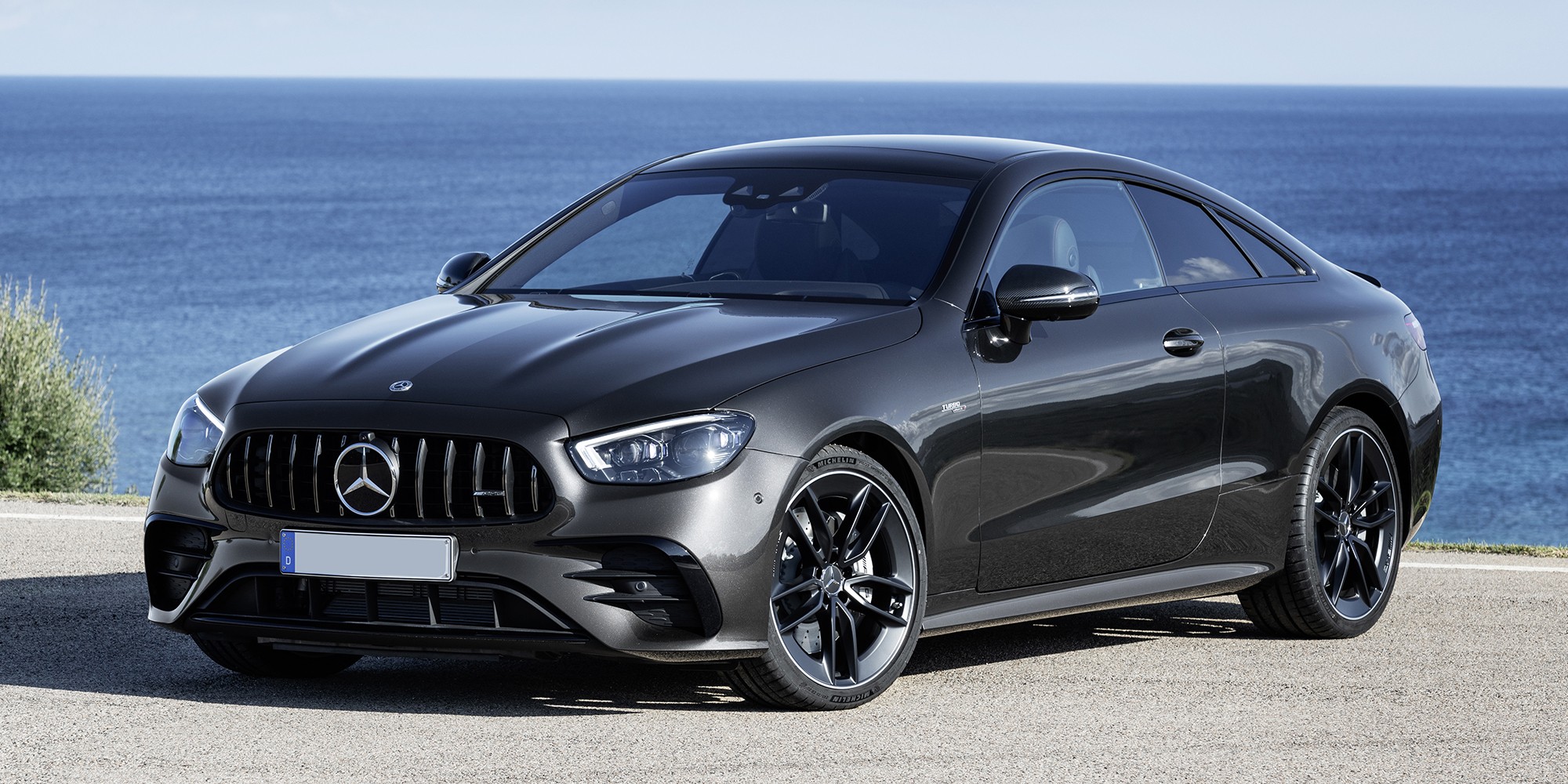 Mercedes E-Class Coupe front view
Mercedes E-Class Coupe front view
Image: Front view of a Mercedes E-Class Coupe, showcasing its sleek two-door design and sloping roofline, typical characteristics of a coupe body style.
Coupe-SUVs
Coupe-SUVs represent a blend of SUV practicality and coupe styling, creating a distinctive and increasingly popular car body style. They offer the elevated driving position and robust styling associated with SUVs, but incorporate a sloping, coupe-like roofline that distinguishes them from traditional SUV shapes. The aim is to combine the desirability and sporty image of a coupe with the practical benefits and commanding presence of an SUV. Popular examples in this category include the BMW X6 and the Mercedes GLE Coupe.
While coupe-SUVs retain many SUV advantages, such as a raised driving position and some off-road capability, they often compromise on practicality. Boot space tends to be reduced compared to standard SUVs, and rear headroom can be less generous due to the sloping roofline. However, their unique combination of styles makes them an appealing option for buyers seeking a vehicle that stands out while offering SUV-like features.
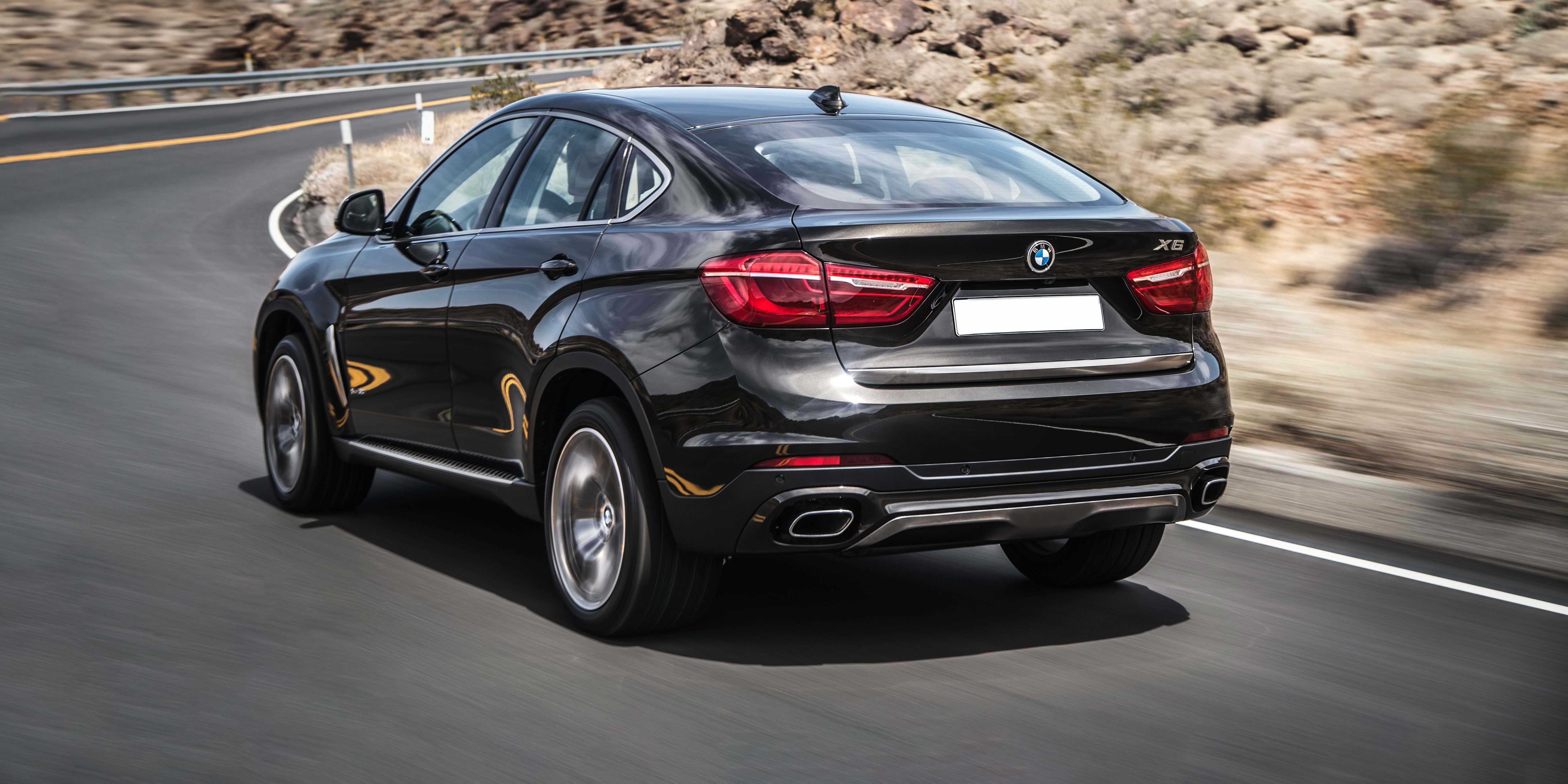 BMW X6 coupe-SUV rear view
BMW X6 coupe-SUV rear view
Image: Rear three-quarter view of a BMW X6 coupe-SUV in motion, highlighting the sloping roofline that defines the coupe-SUV body style, merging SUV height with coupe-like aesthetics.
Convertibles/Cabriolets
The terms cabriolet and convertible are used interchangeably to describe cars with roofs that can be opened, allowing for open-air driving. While folding metal roofs were once a popular trend, fabric roofs have regained prominence due to their lighter weight and simpler mechanisms. Convertibles often start as coupes, with their roofs removed and replaced by a retractable soft or hard top. This design transformation allows drivers to enjoy the exhilaration of open-top motoring while maintaining the underlying style and performance characteristics of a coupe. Common examples in this category include the Audi A5 Cabriolet and the BMW 4 Series Convertible.
Interestingly, the convertible body style has expanded beyond traditional coupes, with niche models like convertible SUVs emerging. Although less common, the Volkswagen T-Roc Cabriolet exemplifies this trend. Even smaller cars like the Fiat 500 Cabriolet, with its large sunroof-style fabric roof, offer a taste of open-air driving. Convertibles span a wide range, from luxury models like the Rolls-Royce Dawn to sporty roadsters like the Mazda MX-5, showcasing the versatility of this body style.
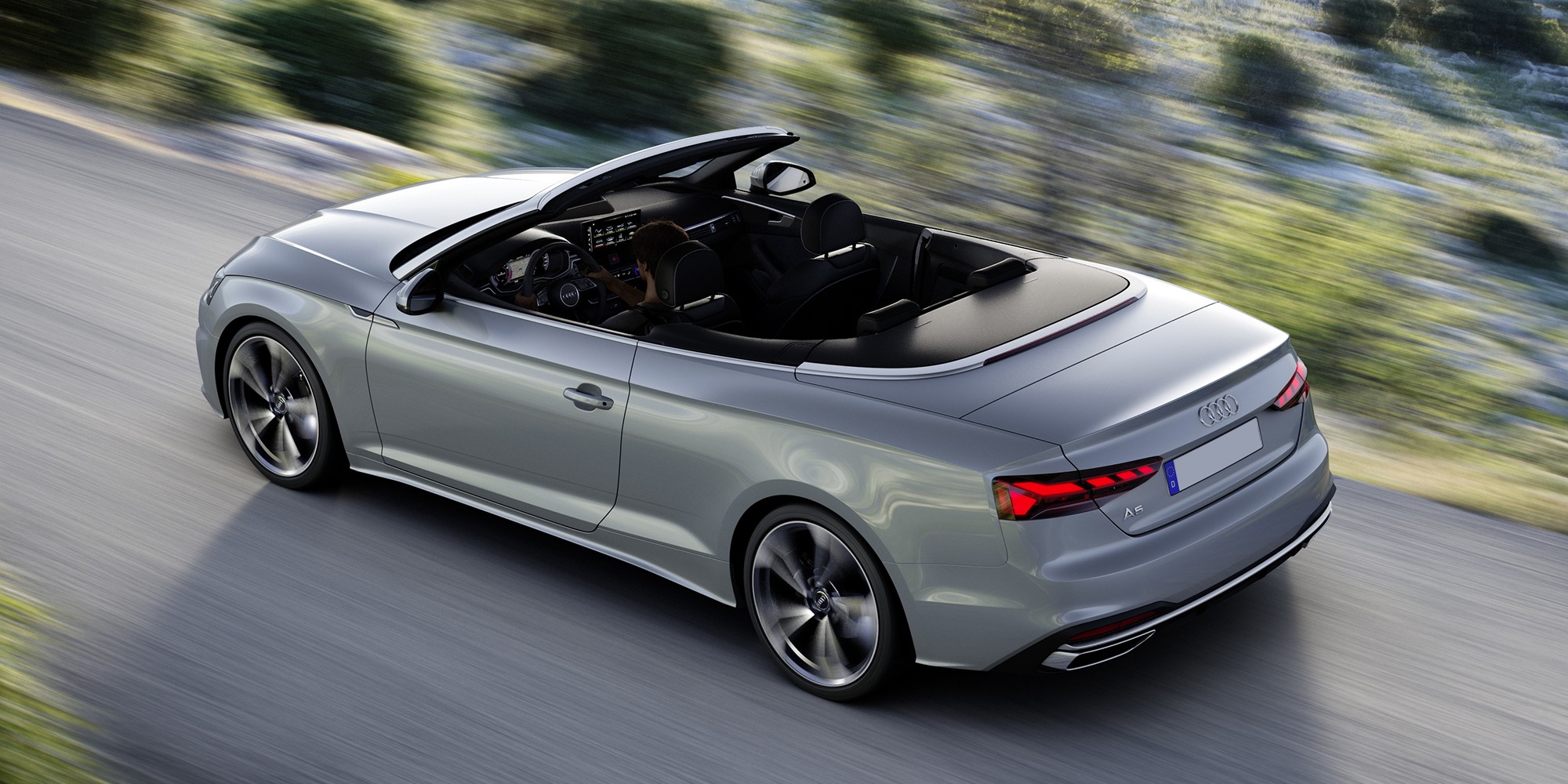 Audi A5 Cabriolet rear detail
Audi A5 Cabriolet rear detail
Image: Close-up rear view of an Audi A5 Cabriolet, emphasizing the retractable fabric roof, a key feature of convertibles that provides open-air driving experience while maintaining structural integrity.
Estates
Estate cars, also known as wagons, are typically based on saloon or hatchback models but are extended in length to maximize cargo space. A defining feature of estate cars is their large, rectangular boot area, characterized by a vertical or near-vertical rear window. This design maximizes the usable space in the rear, making estates exceptionally practical for carrying luggage, equipment, and more. The Volvo V90 and Audi A6 Avant are classic examples of the estate car body style, renowned for their spaciousness and functional design.
The primary advantage of an estate over a comparable saloon is significantly increased boot capacity. This makes estates ideal for families, professionals, or anyone needing substantial cargo room without sacrificing passenger comfort or vehicle handling. Beyond the potentially less sleek appearance compared to saloon counterparts, estates offer few compromises, providing a blend of practicality and driving dynamics.
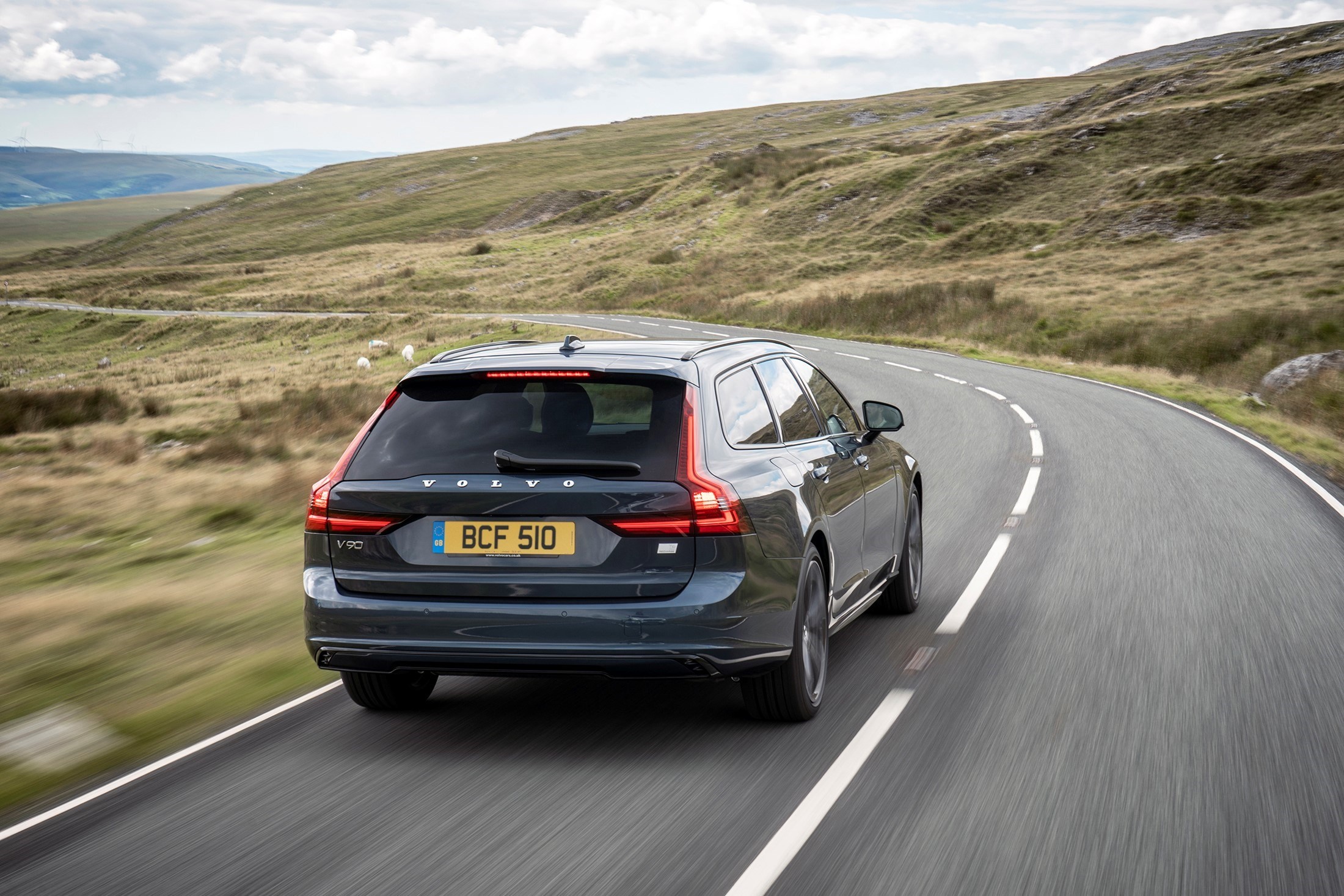 Volvo V90 estate car profile view
Volvo V90 estate car profile view
Image: Side profile of a Volvo V90 estate car, demonstrating its elongated body and vertical rear window that are characteristic of estate cars, maximizing cargo space and practicality.
Four-door Coupes
Four-door coupes merge the sleek, stylish aesthetics of a coupe with the added practicality of four doors, essentially creating saloon cars with a more dramatically sloping roofline. This body style emerged from premium manufacturers seeking to inject more visual excitement into the traditional saloon format. Models like the Mercedes CLS, which pioneered this style, and the BMW 8 Series Gran Coupe exemplify the four-door coupe segment. Smaller versions, such as the Mercedes CLA, further broaden the appeal of this body type.
Four-door coupes generally offer a more dynamic and visually appealing alternative to saloons, with their lower stance and streamlined rooflines. They maintain the everyday usability of a saloon, including easy rear-seat access, but the sloping roof can sometimes reduce rear headroom. Despite the ‘coupe’ designation, the added doors and interior space make them significantly more practical than traditional two-door coupes, appealing to buyers who prioritize both style and functionality.
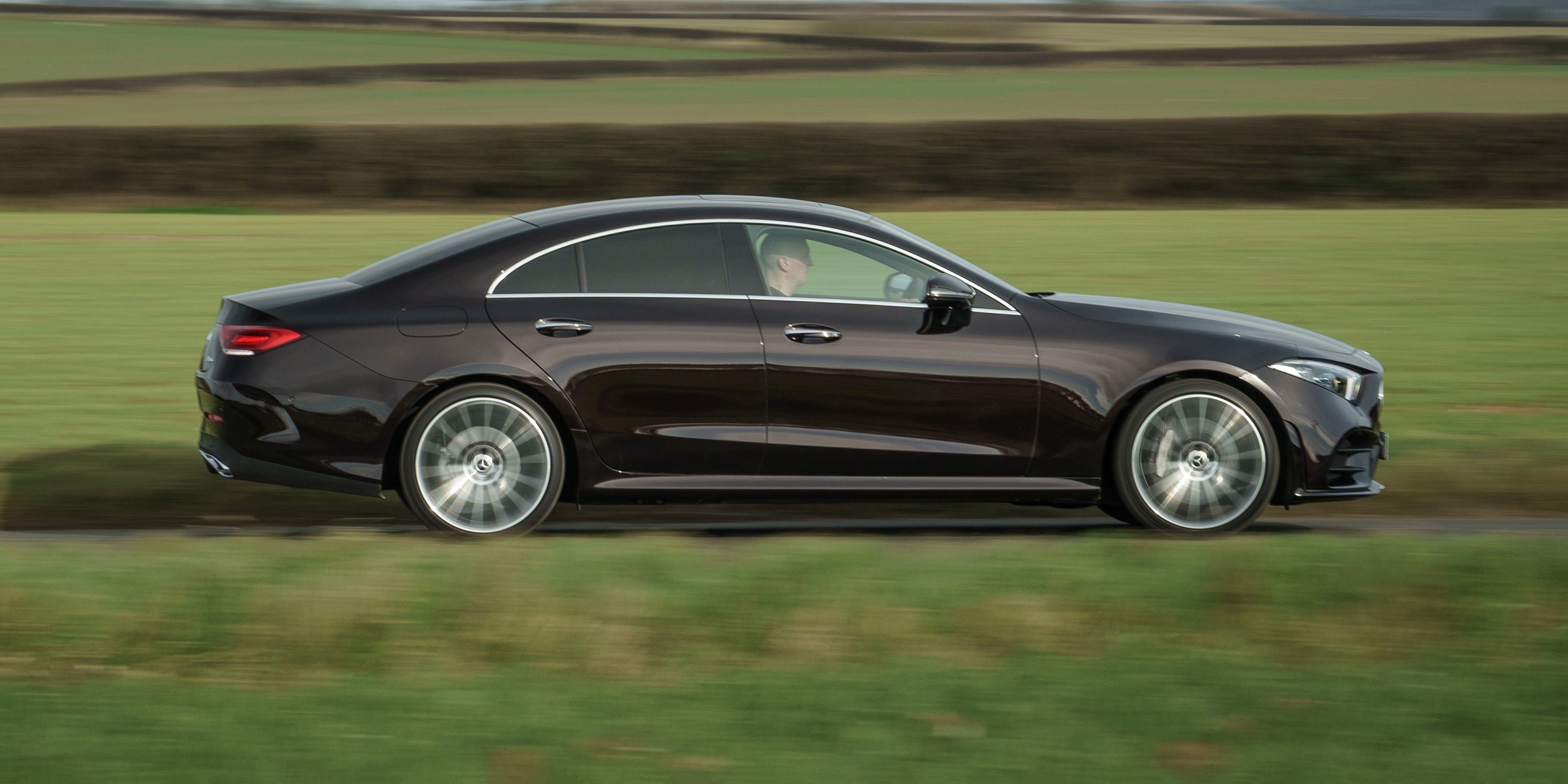 Mercedes CLS four-door coupe side view
Mercedes CLS four-door coupe side view
Image: Side view of a Mercedes CLS four-door coupe, showcasing its signature curved, sloping roofline that distinguishes it from a traditional saloon while retaining four-door practicality.
Hatchbacks
Hatchbacks are arguably the most popular and recognizable car body style, particularly outside of the SUV category. The defining feature of a hatchback is its boot lid, which incorporates the rear windscreen and opens upwards on roof-mounted hinges. This design provides a large, easily accessible opening to the cargo area, enhancing practicality. Family hatchbacks like the Volkswagen Golf, Ford Focus, and Mercedes A-Class are widely popular for their versatility and balanced size. The hatchback category also includes smaller superminis like the Ford Fiesta and even compact city cars such as the Volkswagen Up, demonstrating the breadth of this body style.
Family hatchbacks are often considered the “Goldilocks” of cars, striking a balance between practicality, affordability, fuel efficiency, comfort, and ease of driving. They offer sufficient space for passengers and luggage while remaining compact enough for urban environments, making them a highly versatile and widely appealing car body style.
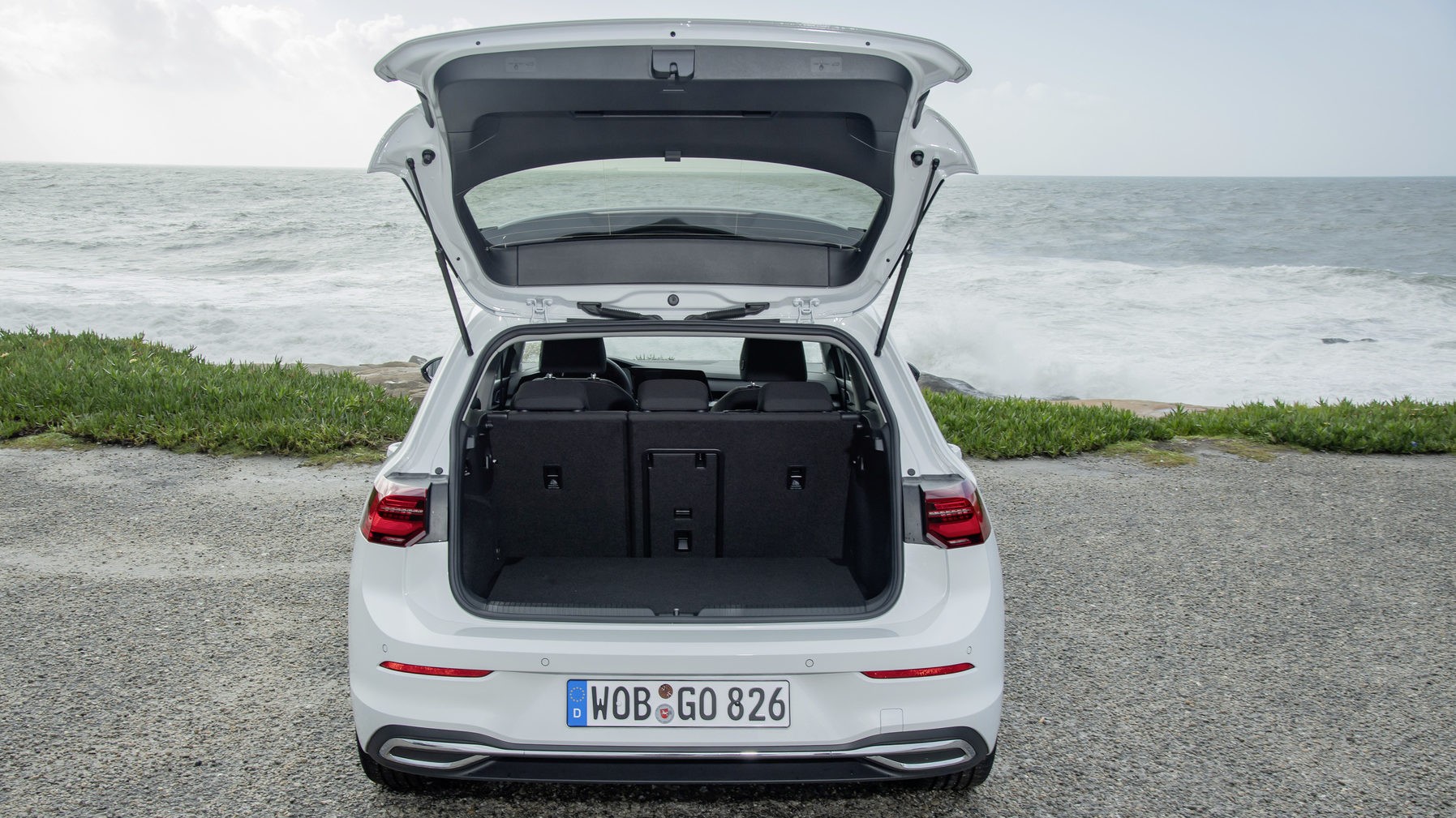 Volkswagen Golf hatchback rear view
Volkswagen Golf hatchback rear view
Image: Rear view of a Volkswagen Golf hatchback, clearly showing the rear window and boot lid opening as one unit, hinged at the roof, a defining characteristic of the hatchback body style.
MPVs/People Carriers
MPV, short for Multi-Purpose Vehicle, and people carrier are interchangeable terms for highly practical vehicles designed to maximize passenger space. MPVs are characterized by their tall roofs and boxy shapes, prioritizing interior volume and passenger capacity, often accommodating seven or more occupants. Features like sliding rear doors are common, further enhancing accessibility and practicality, especially for families. While MPVs offer a car-like driving experience, their primary focus is on providing significantly more space than a typical saloon or SUV.
Popularized by models like the Renault Espace in the 1980s, MPVs have seen a decrease in popularity as SUVs have become more fashionable. However, they remain a highly practical choice for large families or those needing maximum passenger and cargo space. Models like the Volkswagen Touran and Ford Galaxy continue to be offered, catering to buyers who prioritize functionality and space above all else.
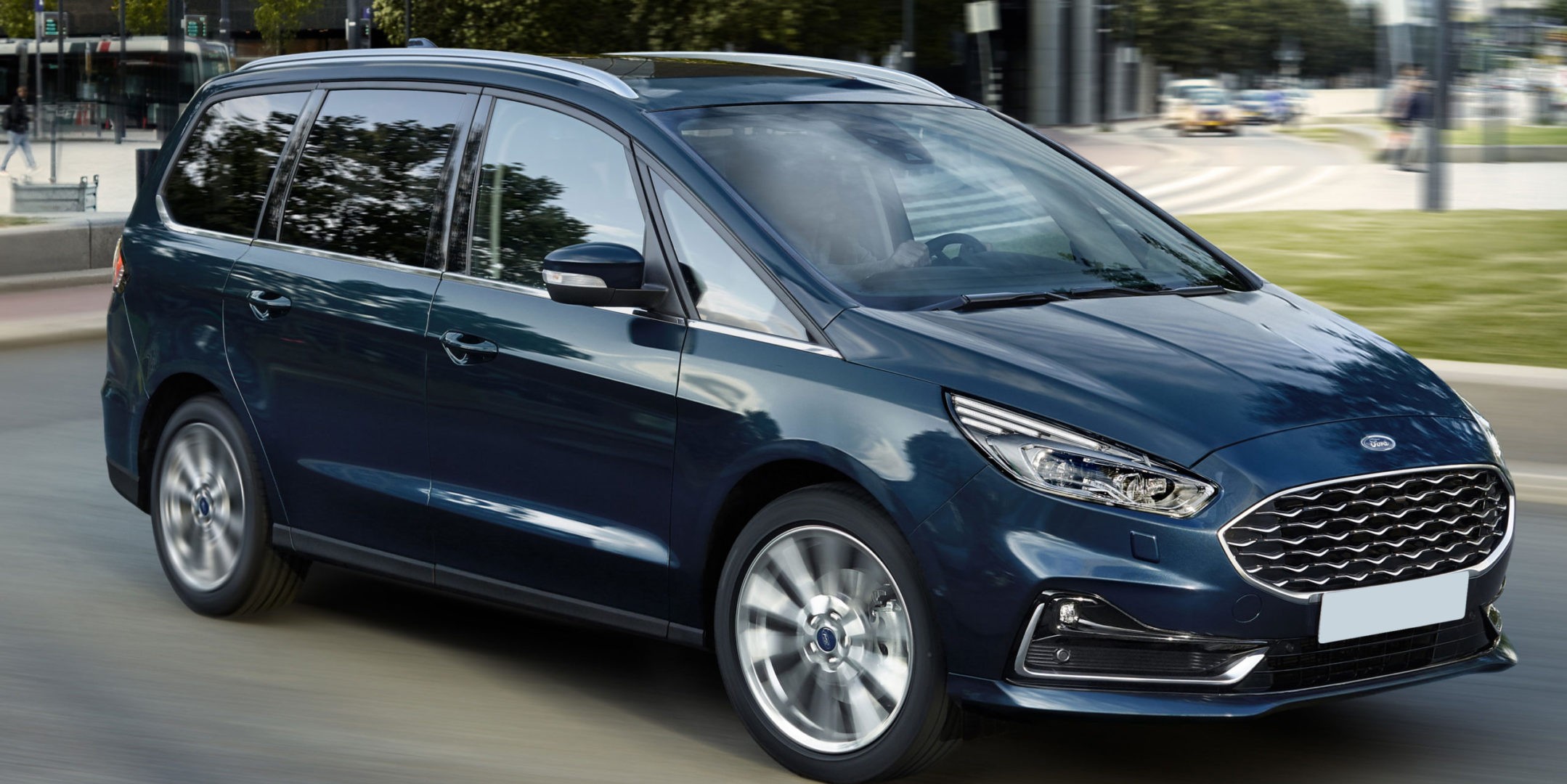 Ford Galaxy MPV front view
Ford Galaxy MPV front view
Image: Front view of a Ford Galaxy people carrier, highlighting its tall roofline and spacious design, typical of MPVs that prioritize passenger volume and practicality for large families.
Saloons
Saloons, often referred to as sedans, are a classic car body style, particularly prevalent in the premium segment, with brands like Audi, BMW, and Mercedes-Benz heavily featuring saloons in their lineups. Saloons are traditionally described as “three-box” designs, clearly separating the engine bay, passenger cabin, and boot into distinct volumes. This contrasts with the “two-box” design of a hatchback. The boot is a separate compartment, distinct from the passenger area.
Saloons range in size from compact executive models like the Mercedes C-Class and Audi A4 to full-size luxury saloons such as the Mercedes S-Class. Their longer wheelbases generally contribute to a more comfortable ride and increased legroom compared to hatchbacks. However, saloons often sacrifice some practicality compared to hatchbacks due to their boot lids, which offer a more restricted opening and less vertical space compared to a hatchback’s full rear access.
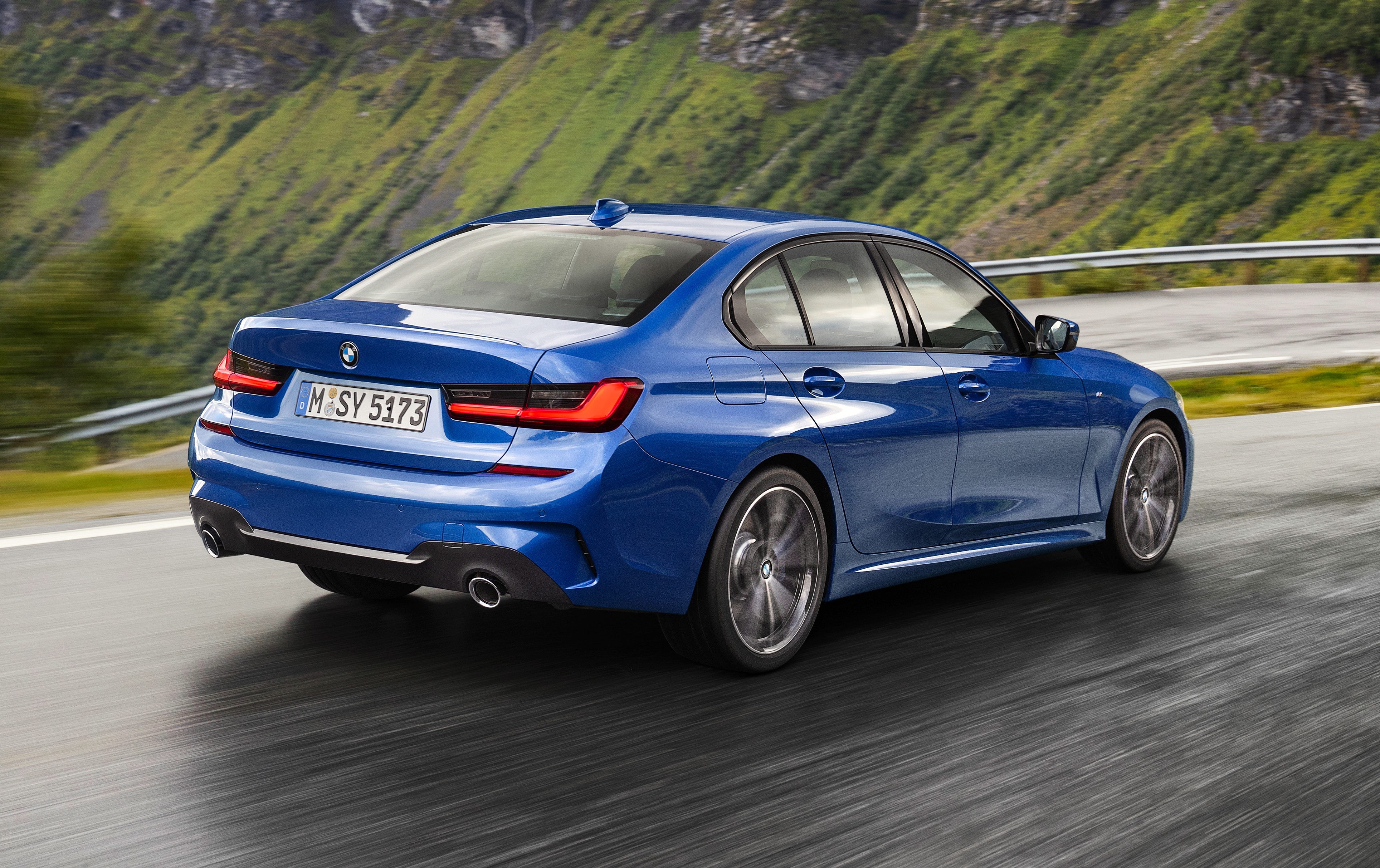 BMW 3 Series saloon front view
BMW 3 Series saloon front view
Image: Front three-quarter view of a BMW 3 Series saloon, illustrating the classic ‘three-box’ design with distinct sections for the bonnet, cabin, and boot, a hallmark of saloon body styles.
Shooting Brakes
Shooting brakes represent a niche but stylish car body style, essentially estate cars with a more sloping, coupe-like roofline at the rear. The distinction can be subtle, leading to debate about whether they warrant a separate category. However, much like four-door coupes differentiate themselves from saloons, shooting brakes offer a design-focused alternative to traditional estates. Originating from horse-drawn wagons used for hunting parties, the term ‘shooting brake’ now denotes a blend of estate practicality and sporty aesthetics.
Only a limited number of models are marketed as shooting brakes, making them relatively exclusive. Examples include the Volkswagen Arteon Shooting Brake, Mercedes CLA Shooting Brake, and Genesis G70 Shooting Brake. They offer a visually more dynamic take on the estate car, appealing to buyers who desire estate functionality with a touch of coupe-inspired styling.
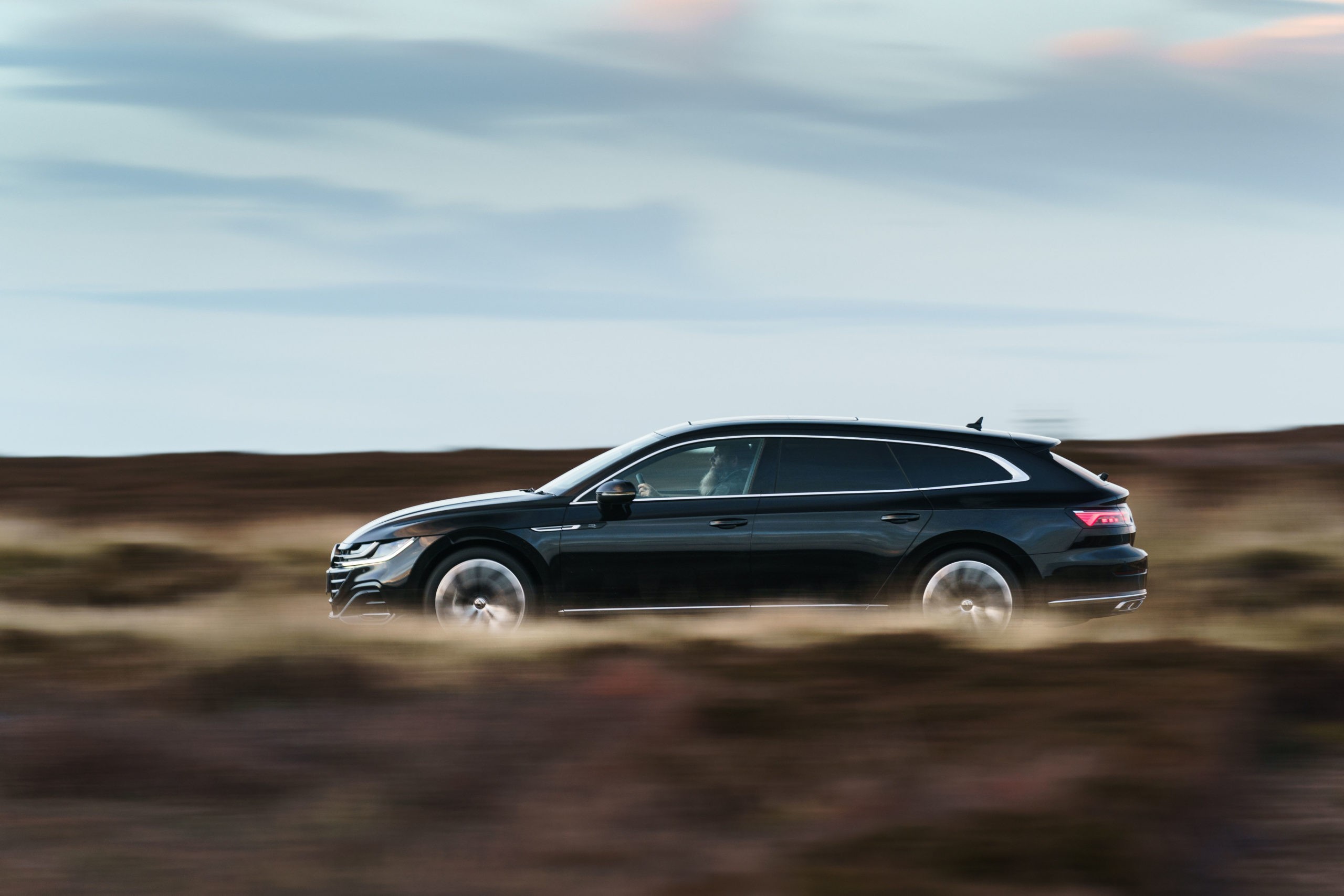 VW Arteon Shooting Brake rear view
VW Arteon Shooting Brake rear view
Image: Rear view of a VW Arteon Shooting Brake, highlighting its tapered estate boot and sloping roofline that characterize the shooting brake body style, blending estate practicality with a more dynamic design.
SUVs
SUV, or Sport Utility Vehicle, has become the dominant car body style for many buyers, particularly families. SUVs are characterized by their taller stance compared to traditional hatchbacks or saloons, providing a higher driving position and often a more commanding road presence. The SUV category is incredibly diverse, encompassing a wide range of sizes and capabilities, from compact crossovers like the SEAT Arona to large, off-road focused vehicles like the Jeep Wrangler. Popular examples include the Audi Q5, Kia Sportage, and Land Rover Discovery Sport, demonstrating the broad appeal of SUVs across different segments.
Most SUVs feature a hatchback-style boot for practicality, although some may incorporate side-opening tailgates. The defining characteristic is their increased height, which often translates to more interior space and a feeling of robustness. SUVs have effectively replaced traditional hatchbacks and MPVs for many consumers, becoming the default choice for those seeking versatility, space, and a higher driving position.
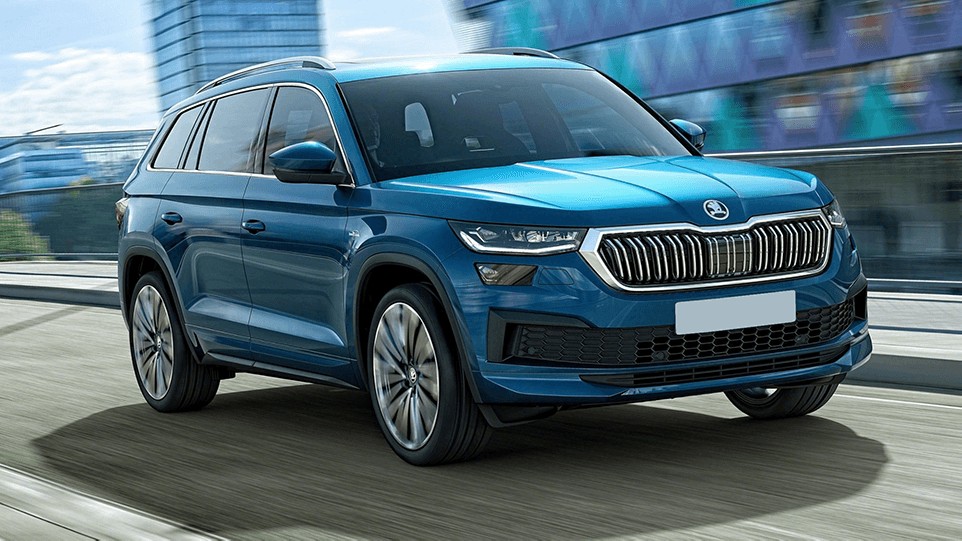 Skoda Kodiaq SUV front view
Skoda Kodiaq SUV front view
Image: Front three-quarter view of a Skoda Kodiaq SUV, showcasing its taller stance and robust design, defining features of SUVs that contribute to their popularity as family vehicles.
Car Body Styles and Your Choice
Understanding the different types of car body styles is the first step in finding the right vehicle to match your lifestyle and needs. Each style offers a unique blend of practicality, style, and driving experience. By considering your priorities, you can navigate the car market with greater clarity and choose a car body style that truly suits you.
